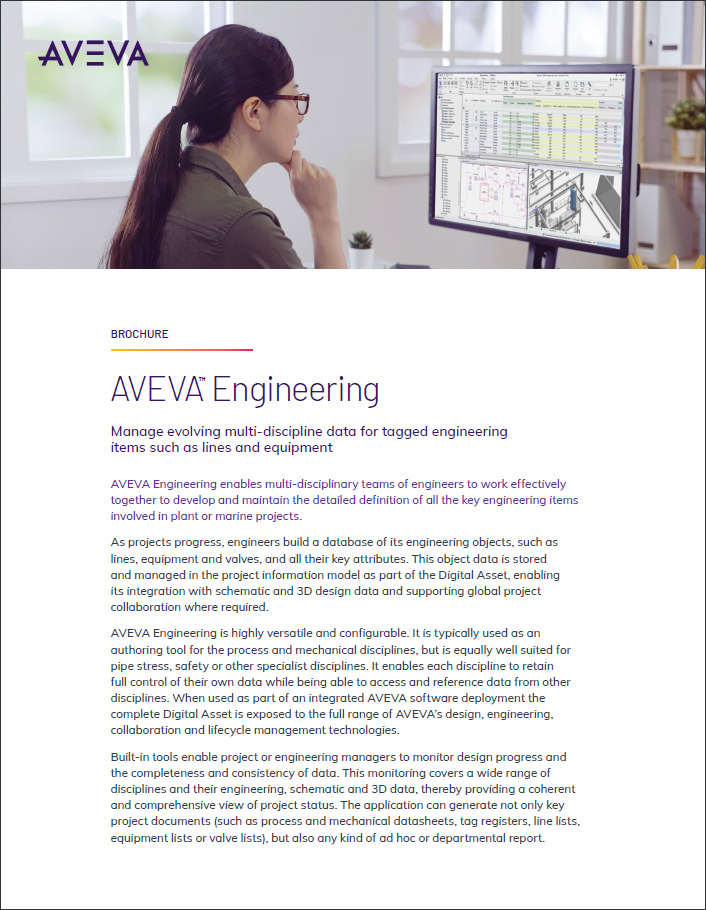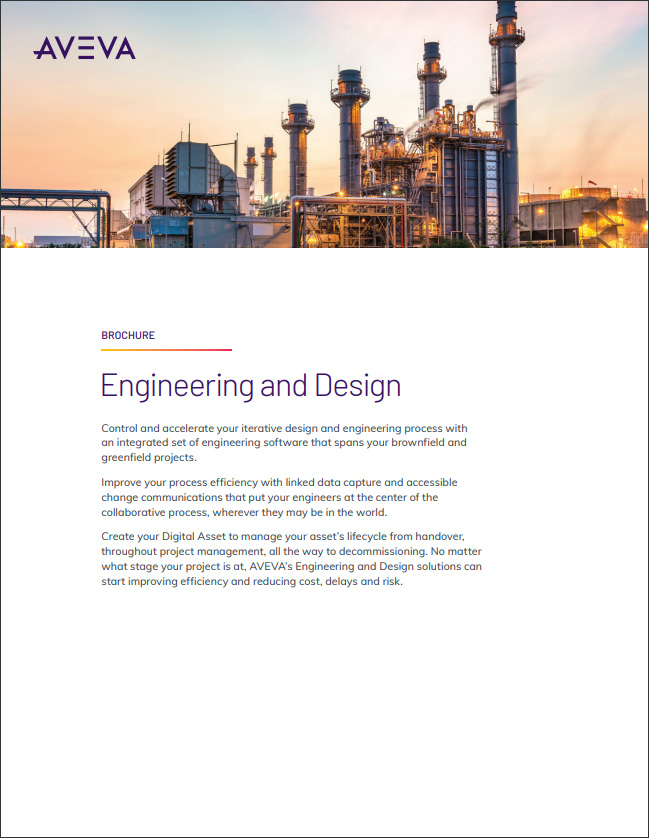
Collaborate across disciplines. Control your tags. Manage change.
A highly configurable data model allows AVEVA Engineering to meet a wide range of project, customer and industry requirements, and to manage virtually any scope of engineering data. Typical benefits include facilitating the exchange of information between disciplines, managing tag registers and achieving controlled integration with other data sources. Each discipline retains full control of its information relating to any item.
Configurable consistency checks can be applied across the database at any time to check data quality, while built-in tools enable the status of individual objects to be carefully controlled and made visible to other users.
A wide variety of fully formatted reports can be generated automatically, such as master tag registers, line lists, equipment lists or valve lists, and any kind of ad hoc or departmental report.

Control. Efficiency. Quality
More effective management of data assets
Gather engineering data from all those disconnected spreadsheets into one database.
Manage your tags through the asset lifecycle
Whether you are an EPC or O/O, AVEVA Engineering will help you to manage the lifecycle of your tags, avoiding duplicate and mismatched tags between different data sources, and making sure that naming rules are followed by all disciplines.
Increased design efficiency and quality
Enables earlier detection of a wide range of data inconsistencies during design, reducing the risk of costly changes and rework.
Enables new, more effective working practices
AVEVA Engineering offers unrivalled opportunities for integrated working across schematics, engineering and 3D design.
Efficient and flexible multi-location, global working
Supports effective global collaboration across distributed, multi-discipline engineering teams.
Reduced impact of changes on cost, schedule, quality and risk
Changes can be implemented more quickly, and controlled and communicated more effectively.
Proven solution, proven results
- Puts engineering data into a common project database where it can be
more effectively managed, controlled and used. - Fewer errors from uncontrolled handover of data between disciplines.
- Enables changes to be implemented quickly and efficiently, reducing their
impact on cost, schedule, quality and risk. - Creates high-quality datasheets, lists, schedules and other deliverables on
demand.
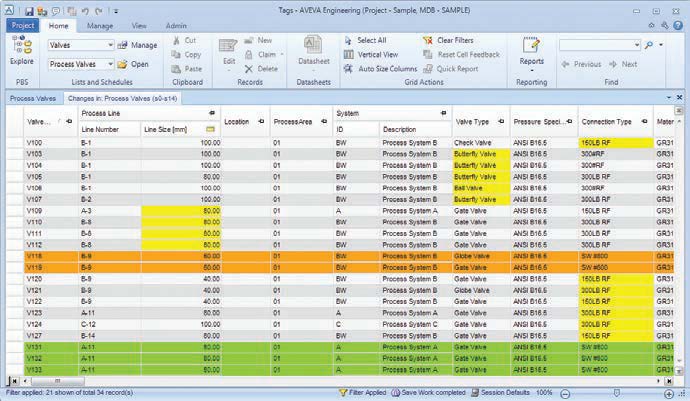
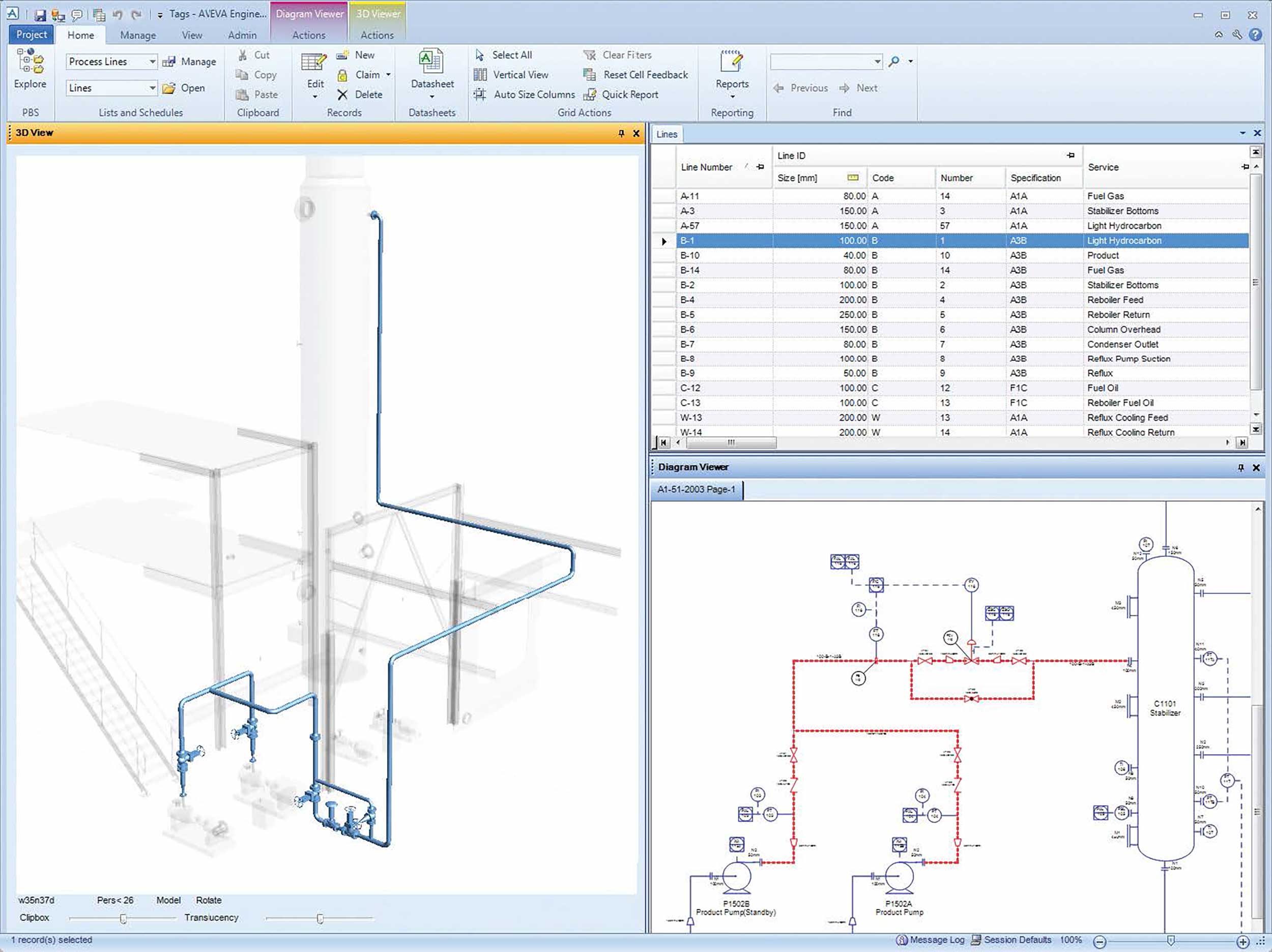
Manage Evolving Multi-discipline Engineering Data
AVEVA Engineering supports a standards-driven way-of-working that will ensure control and efficiency across a wide range of projects, and will ensure that customer or industry requirements are fulfilled, including progress follow-up during the project as well as complete and correct data handover to the client.
It includes a powerful programming language (PML) and .NET APIs, enabling the application of all kinds of customer or industry specific customization and automation.
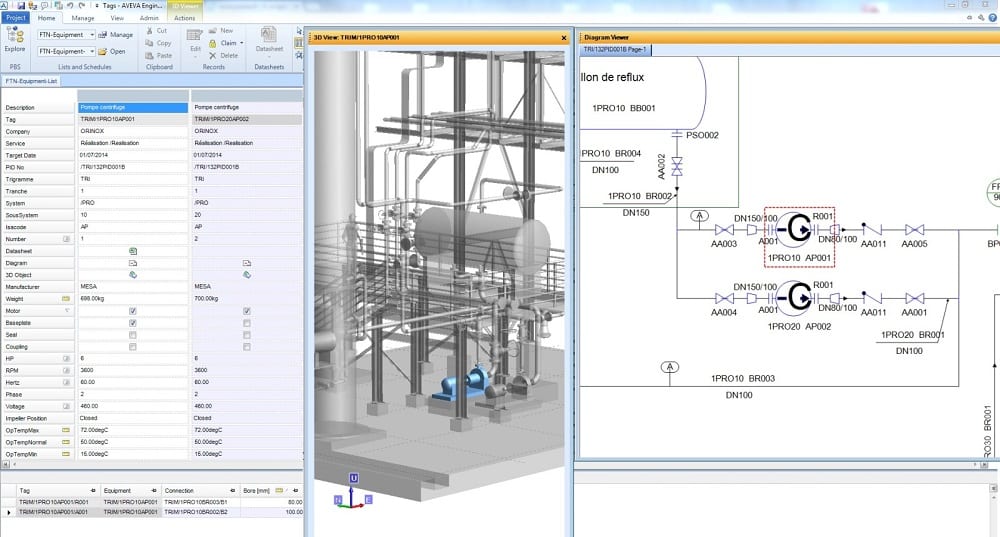
Remove boundaries between data sources, enabling better integrated, more effective working methods.
